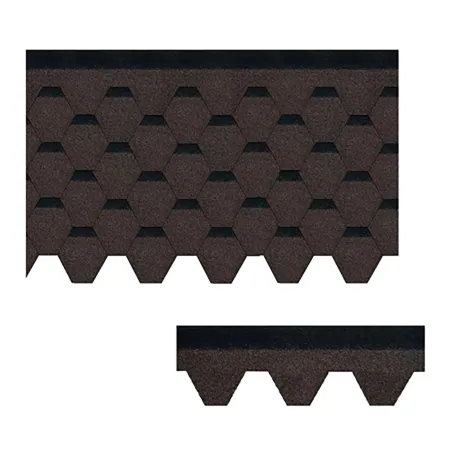coolroof@cnchida.com
+86 13803333363
 Afrikaans
Afrikaans
 Albanian
Albanian
 Amharic
Amharic
 Arabic
Arabic
 Armenian
Armenian
 Azerbaijani
Azerbaijani
 Basque
Basque
 Belarusian
Belarusian
 Bengali
Bengali
 Bosnian
Bosnian
 Bulgarian
Bulgarian
 Catalan
Catalan
 Cebuano
Cebuano
 Corsican
Corsican
 Croatian
Croatian
 Czech
Czech
 Danish
Danish
 Dutch
Dutch
 English
English
 Esperanto
Esperanto
 Estonian
Estonian
 Finnish
Finnish
 French
French
 Frisian
Frisian
 Galician
Galician
 Georgian
Georgian
 German
German
 Greek
Greek
 Gujarati
Gujarati
 Haitian Creole
Haitian Creole
 hausa
hausa
 hawaiian
hawaiian
 Hebrew
Hebrew
 Hindi
Hindi
 Miao
Miao
 Hungarian
Hungarian
 Icelandic
Icelandic
 igbo
igbo
 Indonesian
Indonesian
 irish
irish
 Italian
Italian
 Japanese
Japanese
 Javanese
Javanese
 Kannada
Kannada
 kazakh
kazakh
 Khmer
Khmer
 Rwandese
Rwandese
 Korean
Korean
 Kurdish
Kurdish
 Kyrgyz
Kyrgyz
 Lao
Lao
 Latin
Latin
 Latvian
Latvian
 Lithuanian
Lithuanian
 Luxembourgish
Luxembourgish
 Macedonian
Macedonian
 Malgashi
Malgashi
 Malay
Malay
 Malayalam
Malayalam
 Maltese
Maltese
 Maori
Maori
 Marathi
Marathi
 Mongolian
Mongolian
 Myanmar
Myanmar
 Nepali
Nepali
 Norwegian
Norwegian
 Norwegian
Norwegian
 Occitan
Occitan
 Pashto
Pashto
 Persian
Persian
 Polish
Polish
 Portuguese
Portuguese
 Punjabi
Punjabi
 Romanian
Romanian
 Russian
Russian
 Samoan
Samoan
 Scottish Gaelic
Scottish Gaelic
 Serbian
Serbian
 Sesotho
Sesotho
 Shona
Shona
 Sindhi
Sindhi
 Sinhala
Sinhala
 Slovak
Slovak
 Slovenian
Slovenian
 Somali
Somali
 Spanish
Spanish
 Sundanese
Sundanese
 Swahili
Swahili
 Swedish
Swedish
 Tagalog
Tagalog
 Tajik
Tajik
 Tamil
Tamil
 Tatar
Tatar
 Telugu
Telugu
 Thai
Thai
 Turkish
Turkish
 Turkmen
Turkmen
 Ukrainian
Ukrainian
 Urdu
Urdu
 Uighur
Uighur
 Uzbek
Uzbek
 Vietnamese
Vietnamese
 Welsh
Welsh
 Bantu
Bantu
 Yiddish
Yiddish
 Yoruba
Yoruba
 Zulu
Zulu

មករា . 29, 2025 04:27 Back to list
Laminated Shingles Shingles
When someone imagines a quintessentially European home, the image is often completed by the addition of clay tile roof shingles. Renowned for their rustic beauty and exceptional durability, these tiles have adorned homes for centuries. In modern construction and home renovation, clay tile roof shingles offer a striking balance of aesthetic appeal and practical utility. Here's an in-depth look at these timeless roofing materials, combining real-world experiences and expert insights.
Another aspect where clay tile roof shingles excel is sustainability. These tiles are made from natural clay molded into shape and fired at high temperatures. This process means that the tiles are not only made from environmentally friendly materials but can also be recycled at the end of their lifecycle. For environmentally conscious homeowners like Rudy and Maria, choosing clay tiles was as much about aesthetics and strength as it was about reducing their home's carbon footprint. Authoritative bodies in architecture and building standards frequently endorse clay tiles. The roof of Gaudi's Casa Batlló in Barcelona, with its vibrant wavy tiles, stands as an architectural masterpiece where clay’s artistic potential is unleashed. Such examples elevate clay tiles from mere construction material to a medium of artistic expression. The trustworthiness of clay tiles is further evidenced in their fire resistance—a trait that offers peace of mind to homeowners. Clay tiles are non-combustible, providing a barrier against fires that can devastate properties. For homes in wildfire-prone areas, this feature cannot be overstated, making clay tiles an investment in safety as well as style. In conclusion, clay tile roof shingles marry tradition with modern efficiency. They provide a durable, energy-efficient, environmentally friendly, and safe roofing option that homeowners and experts alike trust. For anyone looking at a roofing material that combines timeless appeal with practical benefits, clay tiles deserve a prominent place in that conversation. Rudy and Maria’s villa not only retains its historic charm but stands transformed into a more resilient, eco-friendly home, proving once again why clay tile roof shingles remain an unparalleled choice in roofing solutions.


Another aspect where clay tile roof shingles excel is sustainability. These tiles are made from natural clay molded into shape and fired at high temperatures. This process means that the tiles are not only made from environmentally friendly materials but can also be recycled at the end of their lifecycle. For environmentally conscious homeowners like Rudy and Maria, choosing clay tiles was as much about aesthetics and strength as it was about reducing their home's carbon footprint. Authoritative bodies in architecture and building standards frequently endorse clay tiles. The roof of Gaudi's Casa Batlló in Barcelona, with its vibrant wavy tiles, stands as an architectural masterpiece where clay’s artistic potential is unleashed. Such examples elevate clay tiles from mere construction material to a medium of artistic expression. The trustworthiness of clay tiles is further evidenced in their fire resistance—a trait that offers peace of mind to homeowners. Clay tiles are non-combustible, providing a barrier against fires that can devastate properties. For homes in wildfire-prone areas, this feature cannot be overstated, making clay tiles an investment in safety as well as style. In conclusion, clay tile roof shingles marry tradition with modern efficiency. They provide a durable, energy-efficient, environmentally friendly, and safe roofing option that homeowners and experts alike trust. For anyone looking at a roofing material that combines timeless appeal with practical benefits, clay tiles deserve a prominent place in that conversation. Rudy and Maria’s villa not only retains its historic charm but stands transformed into a more resilient, eco-friendly home, proving once again why clay tile roof shingles remain an unparalleled choice in roofing solutions.
Previous:
Next:
Latest news
-
Explore Types of Roof Shingles: Durable Asphalt & More!
NewsAug.07,2025
-
Architectural Asphalt Shingles | Laminated & Durable
NewsAug.06,2025
-
Premium Stone Coated Metal Roof Tiles | Spain Tile
NewsAug.05,2025
-
Types of Roof Shingles: Durable Styles & Materials
NewsAug.04,2025
-
Different 3 Tab Shingles Types | Affordable & Durable Roofing
NewsAug.03,2025
-
Premium Round Asphalt Shingles: Durable & Elegant Roofing
NewsAug.01,2025
Related Products
Copyright © 2025 Hebei Chida Manufacture and Trade Co., Ltd. All Rights Reserved. Sitemap | Privacy Policy







